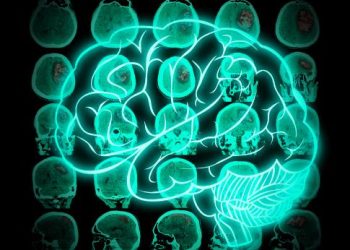There are some things that increase your risk of stroke, such as age, sex or family history. However, there are also many preventive measures that can lower your risk.
Getting regular health checks, eating well and not smoking are all important for reducing your stroke risk. The best thing to do is talk to your doctor about these things.
Exercise
In recent years, exercise and physical fitness training have been recommended as a component of stroke rehabilitation programmes because of the emerging body of evidence surrounding its benefits in improving function after stroke. The interface between physical activity and cerebrovascular disease is complex and of broad interest to clinicians, therapists, and epidemiologists.
Studies consistently show that physically active individuals have a lower risk of stroke than their sedentary counterparts. In fact, even light to moderate amounts of physical activity significantly reduce the chance of suffering from a stroke. Nevertheless, many questions remain unanswered regarding the optimal intensity and frequency of exercise for stroke prevention. These include the effect of gender on the stroke-prevention benefits of physical activity, dubiety about the optimum intensities required to confer the most significant reduction in risk for ischaemic and haemorrhagic stroke, and uncertainty about the duration of the observed benefit from physical activity.
Exercise has been shown to improve cardiovascular health and metabolic function, both of which are important factors in the prevention of stroke. Exercise can also help control other risk factors, such as high blood pressure, diabetes and cholesterol. Regular exercise has been shown to decrease the activity of clotting factors, increase nitric oxide production, improve glucose regulation, and stimulate elevations in plasma tissue plasminogen activator and HDL concentrations.
Incorporating a regular amount of physical activity into one’s daily routine can be difficult, especially for those who have suffered from a stroke. However, the key is to find a routine that works for them and to stick with it. Even activities that involve low to moderate intensity, such as gardening, housework and slow-paced walking can be beneficial. In addition to exercise, other lifestyle changes such as eating a healthy diet, quitting smoking and managing stress can significantly reduce stroke risk. However, it is important to consult with your doctor before making any significant changes to your daily routine. They can help you determine how much activity is right for you and will guide you through your journey to a healthier life.
Eat a Healthy Diet
A healthy diet can help reduce the risk of stroke, especially for those with health conditions such as high blood pressure and diabetes. A diet high in saturated fats can lead to the buildup of plaque in arteries, which can eventually cause them to break and bleed, blocking blood flow to the brain and increasing your risk for stroke. Foods high in sodium and sugar can also lead to high blood pressure, which can increase your stroke risk by causing vessels in the brain to bleed and decrease blood flow to the brain.
Incorporating fresh fruits and vegetables into your diet can provide you with the nutrients your body needs to stay healthy, including potassium, folate, thiamin, vitamin C and fiber. Fruits and vegetables are naturally low in calories, so they can help you control your weight and maintain a healthy body mass index (BMI).
Eating foods rich in omega-3 fatty acids, such as salmon, tuna and trout, can also lower your risk for stroke because these fatty acids can help to keep your cholesterol and blood pressure in check. Studies have shown that people who eat fish at least three times per week have a 6% reduced risk of stroke.
Aim for four to five servings of fruits and vegetables each day, including dark green vegetables, berries, tomatoes and peppers. Try to choose those with a lot of natural vitamin C, which will help to boost your immune system and fight off diseases such as stroke.
Consuming more whole grains can also help to lower your stroke risk. These foods are rich in magnesium, folate and thiamin, as well as B vitamins and iron. Eating more foods that are red or purple can also help to reduce your stroke risk, such as beets, pomegranates, cherries, red grapes and purplish-blue vegetables, because these foods contain antioxidants called anthocyanins that can help prevent high blood pressure and inflammation.
In addition, avoid foods high in trans fats and dietary cholesterol, which can contribute to high cholesterol levels and heart disease, both of which are risk factors for stroke. Also, limit your intake of alcohol to two or fewer drinks per day because excessive drinking can raise your stroke risk by more than threefold.
Avoid Smoking
Although some risk factors cannot be changed, such as age and family medical history, you can decrease your chances of having a stroke or a transient ischemic attack (TIA) by eating a healthy diet, exercising regularly and not smoking. You should also avoid alcohol and keep your blood pressure under control. In addition, preventive medications may be appropriate if you have certain heart conditions or blood-clotting disorders.
Stroke occurs when a blood vessel that carries oxygen and nutrients to the brain becomes blocked or stops working properly. In many cases, this causes a lack of oxygen in the brain, which can damage or kill brain cells. There are several types of stroke, and each type has its own unique symptoms. These symptoms can include confusion, slurred speech and loss of balance.
Tobacco smoke contains more than 7,000 different chemicals, including carbon monoxide, formaldehyde and arsenic. When you smoke, these chemicals enter your bloodstream and change the way your body works. These changes can increase your blood pressure, reduce the amount of oxygen in your blood and trigger an irregular heartbeat called atrial fibrillation. Using tobacco products is the number one lifestyle factor that increases your risk of having a stroke. It is estimated that smokers are three times more likely to have a stroke than non-smokers.
Even secondhand smoke can raise your stroke risk by making your blood more likely to clot. This is because it thickens your blood and increases plaque buildup in your arteries. If you are a smoker, you should stop, and if you have trouble doing so on your own, ask your doctor for help. They can suggest ways to help you quit smoking, including nicotine patches and pills, counseling and other treatments.
If you are at risk for a stroke, the most important thing you can do is make sure that your blood pressure is under control. High blood pressure often has no symptoms, so it is important to get yours checked on a regular basis. Talk to your doctor about ways to lower your blood pressure, such as losing weight, avoiding salt and exercise. You can also take aspirin daily, which can help reduce your risk of having a stroke.
Get Regular Checkups
Many strokes occur when blood vessels that supply oxygen and nutrients to the brain break or block off, preventing brain cells from getting what they need. Even a short interruption in this flow can damage or kill brain cells, affecting memory, movement, and speech. More than 80% of strokes are preventable, and it is possible to make simple lifestyle changes and work with your health care team to control the health conditions that can increase your risk.
The most common cause of stroke is high blood pressure. This condition often has no symptoms, so it is important to get your blood pressure checked regularly. A yearly health check with your doctor is also important, because it can help you identify and treat health conditions such as high cholesterol, diabetes, and atrial fibrillation that raise your risk for stroke.
Other health conditions that can contribute to a stroke include obesity, tobacco use, and chronic alcohol consumption. In addition, having a history of stroke or TIA puts you at higher risk for having another one. Getting regular medical checkups can help diagnose and treat these conditions, but you should also follow your health care team’s recommendations for diet and exercise.
Your doctor can assess your risk for stroke by using a blood test or CT scan to measure the thickness of your arteries, and a carotid ultrasound to find any buildup of plaque that could lead to a stroke. Your doctor may also recommend medications to lower your blood cholesterol and blood sugar, as well as other treatments to reduce your chances of having a stroke or heart attack.
You can’t change some of the most common risk factors for stroke, such as your age and a family history. But you can take steps to prevent stroke by exercising, eating a healthy diet, and avoiding smoking. You should also make sure you know the warning signs of stroke so you can call 911 if you or someone else shows them.









